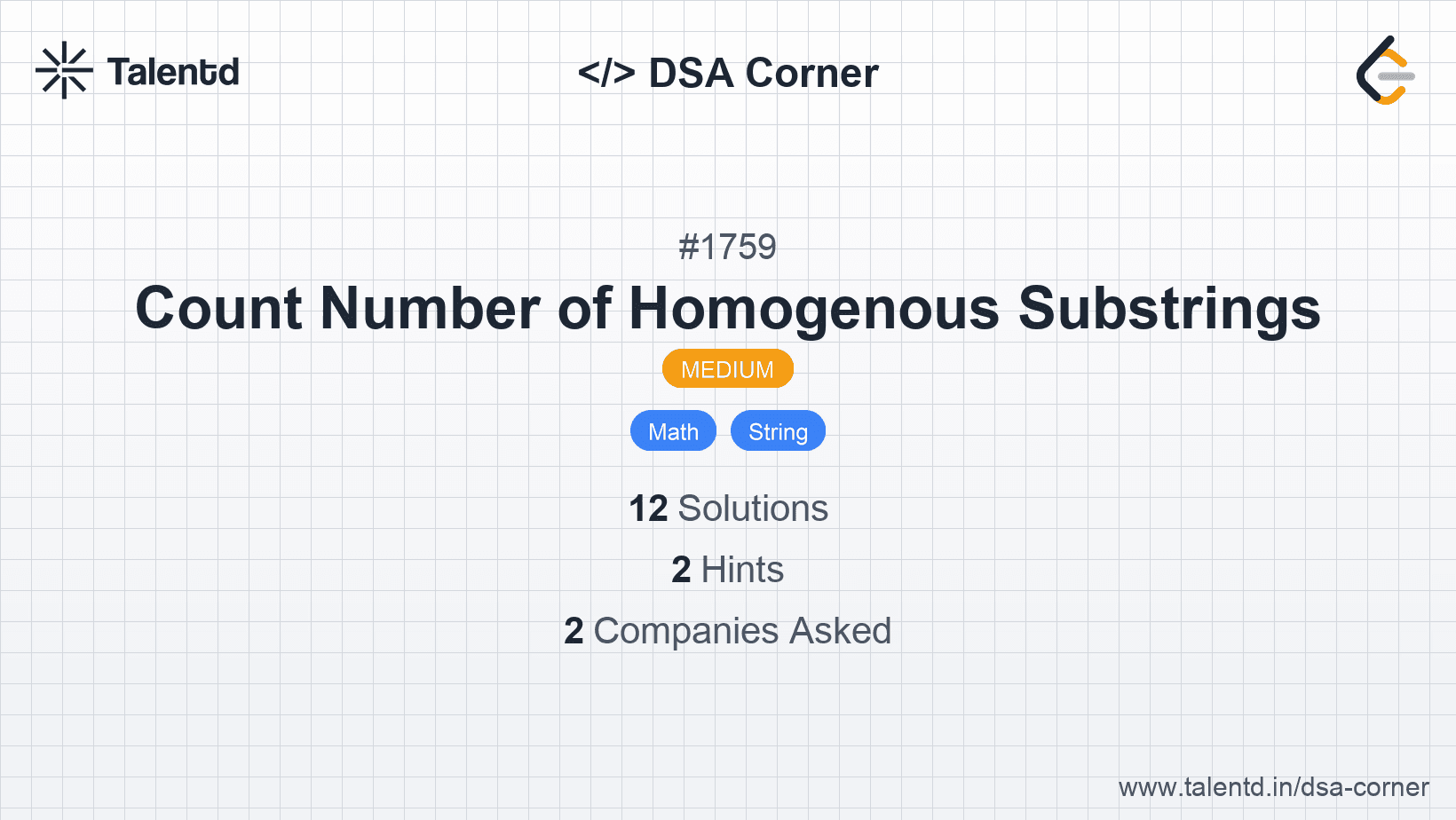
Sponsored
Sponsored
In this approach, we make use of two pointers to keep track of the start and end of a sequence of identical characters. As we iterate through the string, we update the end pointer when we find the same character, and on encountering a different character, we calculate the number of homogenous substrings formed using the formula for the sum of first n natural numbers: n * (n + 1) / 2, where n is the length of the sequence of identical characters. We repeat this process for each identified sequence and accumulate the total number of homogenous substrings.
Time Complexity: O(n), where n is the length of the string.
Space Complexity: O(1), as we only use a constant amount of extra space.
1class Solution:
2 MOD = 1000000007
3
4 def countHomogenous(self, s: str) -> int:
5 count = 0
6 length = 1
7 for i in range(1, len(s)):
8 if s[i] == s[i - 1]:
9 length += 1
10 else:
11 count = (count + length * (length + 1) // 2) % self.MOD
12 length = 1
13 count = (count + length * (length + 1) // 2) % self.MOD
14 return count
15
16# Example usage
17sol = Solution()
18print(sol.countHomogenous("abbcccaa"))In Python, the approach relies on iterating over the string and aggregating the count of homogenous substrings every time a change occurs in the character sequence using Python's // for integer division.
This approach involves counting the sequences of homogenous substrings by leveraging arithmetic progression's sum. By identifying the start and end of each homogenous substring part, we can determine the total count for those characters. We iterate through the string, find the size of each segment, and calculate total substrings using the arithmetic formula.
Time Complexity: O(n) where n is the length of the string.
Space Complexity: O(1) since no extra space is used apart from fixed variables.
The C code initializes a result variable and iterates through the string to compute lengths of continuous characters. The formula for an arithmetic progression then calculates homogenous substrings from each segment.